Just 7% of premises have been connected as part of the National Broadband Plan as the project approaches the halfway point.
However, National Broadband Ireland said that almost a quarter of the targeted half a million connections are now available and it believes that it will complete the roll-out on time over the next three years.
While connections have been established in all 26 counties, in many parts of the country there is still a divide between those individuals who have fibre powered broadband and those who are still waiting to be connected to the internet.
Inis Mhic an Doirn lies off the Donegal coast and is one of the first offshore islands to be connected as part of the National Broadband Plan.
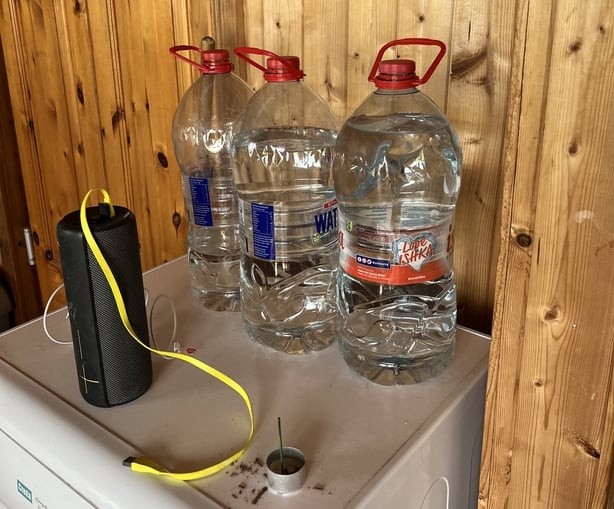
Until recently, just one house was occupied full-time on the small island, which has no running water or a regular ferry service.
However, the recent availability of high-speed broadband has prompted one young couple to relocate to the island from Dublin.
Ian Blake, who is originally from Letterkenny, and his partner Sian Conway from Dublin, had been working in the capital.
They each paid €700 a month to share one room in a three-bedroom apartment in Temple Bar.
Mr Blake's great-grandmother was born on Inis Mhic an Doirn and his grandfather purchased a house on the island, which he visited as a child, and his family later inherited the property.
It is located in two small terraces of stones houses that were built in the 1700s in what was once a thriving fishing community and busy commercial centre, but which later declined and was eventually abandoned.
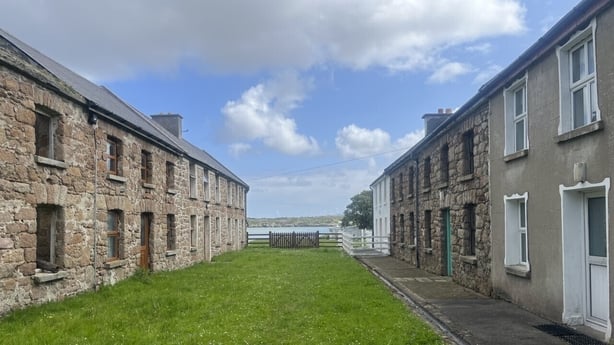
When his father told him that broadband was to become available on the island, Mr Blake saw an opportunity to live a different life.
He asked his employers if he could do his job, as an operations manager for a food company, from the remote location.
Mr Blake said: "It was just way too much. You don't have any headspace, it's just such hustle and bustle. We moved here and the head is way more clear.
"You're in touch with nature, swimming, whatever you want. And I have been able because of the broadband, to seamlessly move into island life.
"I manage all the orders, get all invoices made, do all the operations stuff and take Zoom calls fairly flawlessly here. Everyone's actually jealous of the internet I have out here."
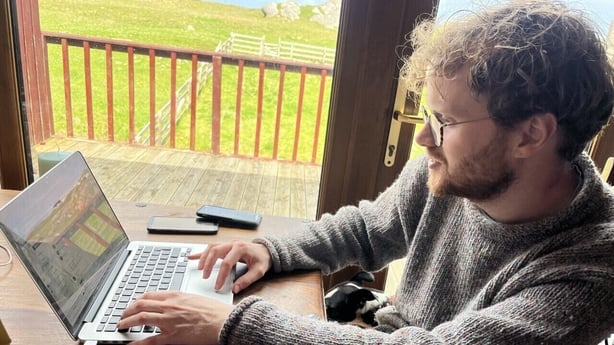
He added: "I was down in Dublin last week and we did a meeting through Zoom on the work Wi-Fi and we had to stop in the middle because everyone's Wi-Fi including my own was not working properly, so my boss actually prefers when I'm on the internet here because it's so smooth.
"When I go to my parents' house on the mainland its constant buffering."
Mr Blake’s partner Ms Conway produces social media content for a food website in Dublin.
Her work requires her to visit and film in locations in the capital, however, she now does most of her video editing and writing off the Donegal coast.
"Broadband and internet are obviously essential for what I do," she said.
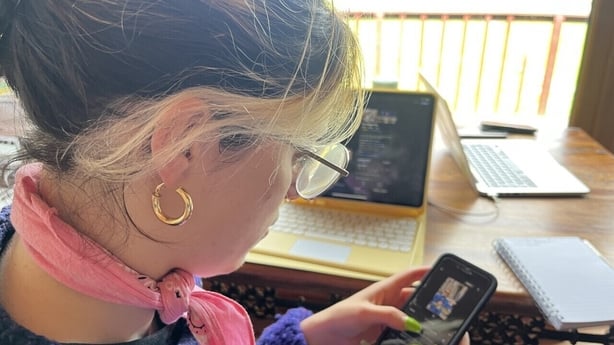
"When I was living in Temple Bar, sharing a flat with some of my friends, the internet barely reached my room in this one floor apartment and now here in this house it's perfect," she said.
"I never really thought I could have a job where I could do it remotely and do it in a place like this, where I actually have a house and ferry going by.
"It's a bit insane to be honest. It's a bit surreal in a way."
Mr Blake said that he sees his future on the island and although he expects his first winter there to be challenging, he said he has no desire yet to return to his pervious life.
"I think I'm here for the long run. I think city life is definitely over for me," he said.
Laird Dinsmore and his wife were the only other residents on the island before Mr Blake and Ms Conway arrived.
Originally from Belfast, Mr Dinsmore has been living on the island for 20 years and has been coming there on and off for 60 years.
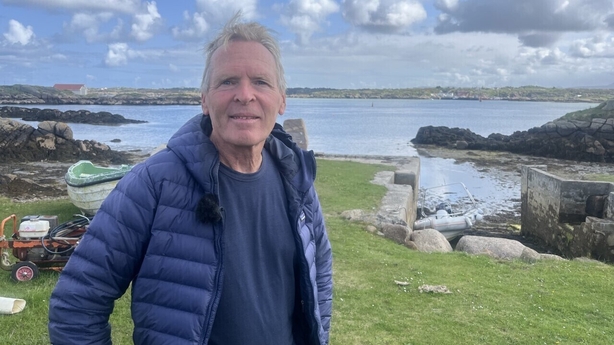
Mr Dinsmore met his new neighbours for the first time while RTÉ News was filming on the island.
He gave them a package that he had collected for them from the post office on the mainland.
He expressed his delight at the fact that broadband has brought new life to the island.
Mr Dinsmore said: "The biggest change I've noticed on the island, when we first came here there was nothing on the island and most of the people just wanted to get off.
"Broadband has opened it up and it means young people can come here and we're starting to see people, which is great. It brings life.
"It means small offshore communities or neglected communities can have broadband and attract people to the area.
"So, presumably in the long-term people could move from the east out to the west and maybe that will ease the property crisis. It's certainly good to see new life being brought into these western communities."
But, while broadband and internet access is injecting new life into the island, back on the mainland many of the surrounding areas are still waiting to be connected.
Amy Patterson from Ramelton said having bad broadband is torture and she has no idea when the National Broadband network will be rolled out in her area.
"I'm just outside the town and it's terrible. Like really bad."
"In the town they have fibre, but we can't get it up the road. When I'm down at my dad’s house his internet is so much faster, but when he's down at our house he's like 'this is shocking'," she said.
Julie from Knockagear said her broadband is not great and that while they have witnessed work being done to install fibre broadband in the locality, they're still waiting to be connected.
"It's a bit disappointing you'd imagine we'd have had more of an upgrade at this stage," she said.
"It's very slow what we have at the minute. My family they're sort of at a loss when they come in," she added.
Broadband plan
The National Broadband Plan began its rollout in 2020 and last week the number of premises connected passed the 40,000 mark.
That is 7% of the 569,000 planned premises that are to be completed by January 2027.
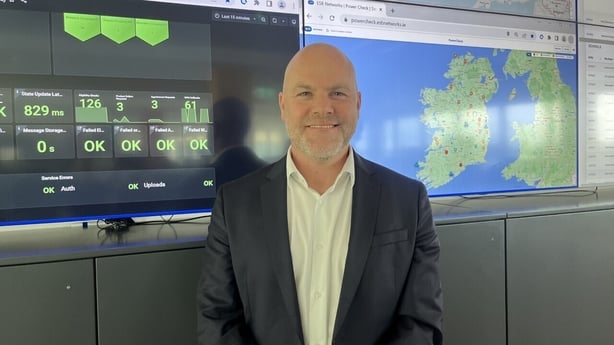
Covid-19 caused some delays, but CEO of National Broadband Ireland Peter Hendrick said that he believes the scheme will be fully rolled out within the next three years.
Mr Hendrick said: "On average we're passing between 7,000 - 10,000 homes per month where we have infrastructure outside these homes and we're connecting between 3,500 - 4,000 homes a month so, the progress is up and running now.
"At the end of 2023 we'll have 80% of all of those homes surveyed and designed and ready to build infrastructure. We'll also have 65% of the network either constructed or ready to connect to homes, or under construction, which is a massive achievement and it really gives us confidence in terms of completing this project within the next three years.
"We're about 15,000 - 20,000 homes ahead of the plan in terms of achieving that."
The National Broadband Plan has been described as the rural electrification of the 21st century.
While it is starting to make a real difference for some in the most remote parts of the country others continue to wait to be connected and hope that National Broadband does reach its targets in terms of delivery times.





